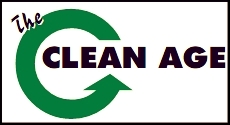If you’re anything like me, your desperation for coffee means you don’t always have your re-usable cup with you when you place your order. So, against your better judgement, you end up accepting one of the store’s takeaway cups. When you’ve finished your coffee you contemplate whether the takeaway cup is potentially recyclable and mull over the method of disposal. Most people don’t even think this much about their daily coffee.
It is estimated there are over 1 billion disposable coffee cups used by Australians each year, with 90% of these thought to end up in landfill. Whilst these cups appear to be paper, they are in fact lined with plastic. It is this plastic that never biodegrades. Parts of the cup break down and become inert, although the remainder of the cup does not. These cups frequently end up in places that cause significant pollution such as waterways and ocean.
There are completely recyclable coffee cup solutions available, but these aren’t always a commercially viable option to cafés and coffee vendors due to increased costs involved. The “recyclable” claim also has to be addressed on each geographical region as recycling facilities are varied across Australia. There are compostable cups around but the majority of these still end up in landfill where they’re not able to compost properly. Many biodegradable claims on cups aren’t always correct as they rely upon a particular additive in manufacturing which hasn’t yet been scientifically proven to break down fully.
So, what is the solution to our daily takeaway coffee? There are a few alternatives available to each of us:
1. Arrive a few minutes early and sit down to enjoy your coffee in the store’s cup and saucer;
2. Take a reusable mug with you. Buy a couple of them and keep one in the car;
3. If you have to use a takeaway cup, refuse the lid altogether;
4. When you’re handed the takeaway cup and lid, make sure you separate the two upon disposal.
It’s always worthwhile asking your local café or vendor if they’re using recyclable cups. If an owner is getting asked this question often enough, it may just prompt a purchasing change to a more environmentally conscious cup.

